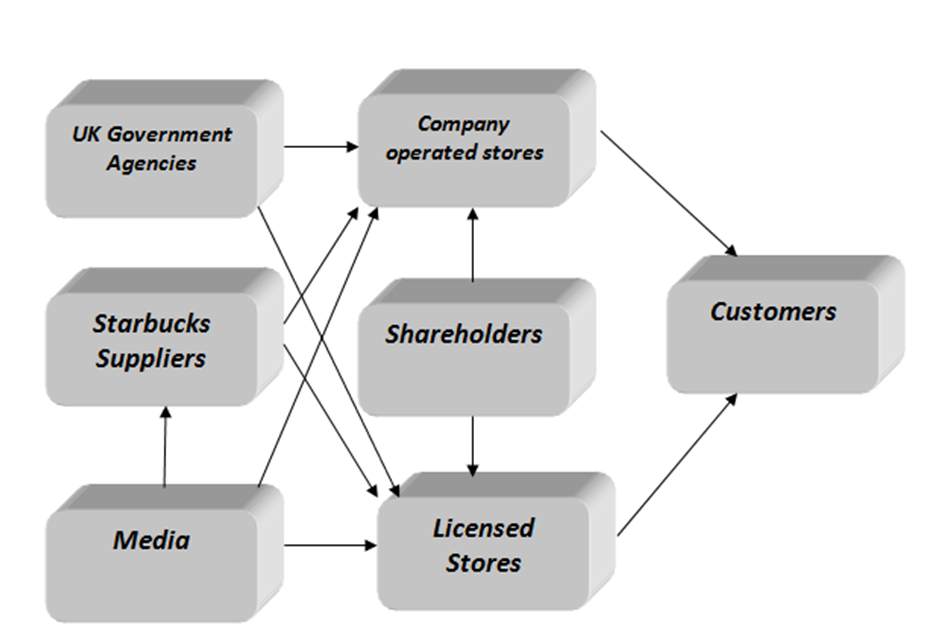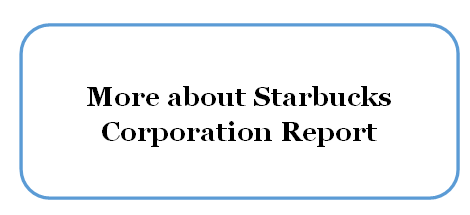Starbucks Value Network
 Value network analysis can be applied in relation to Starbucks operations in the UK in order to “explore the structure of its interaction with several actors in a network of relationships” (Zsidisin and Ritchie, 2008, p.40). In simple terms, value network analysis can be specified as more sophisticated version of Porter’s Value Chain analysis in a way that the former framework explains the impact of each network group in a multidirectional manner.
Value network analysis can be applied in relation to Starbucks operations in the UK in order to “explore the structure of its interaction with several actors in a network of relationships” (Zsidisin and Ritchie, 2008, p.40). In simple terms, value network analysis can be specified as more sophisticated version of Porter’s Value Chain analysis in a way that the former framework explains the impact of each network group in a multidirectional manner.
For example, as it is illustrated in the following figure, media as an important network group within Starbucks value network has direct implications on the performance of three other individual network groups: suppliers, company operated stores, and licensed stores.
This specific interrelationship can not be effectively presented within Porter’s value chain network, due to the fact that this framework is constructed in a rigid and sequential manner.
The following table briefly explains the nature of impact each individual network group within Starbucks value network
| Network group | Comments |
| Company operated stores | The largest source of revenues from the sale of drink and food products |
| Licensed stores | Licensed stores contributed to 9% of total revenues during the financial year of 2011 (Annual Report, 2011). |
| Suppliers | This network group comprises suppliers of coffee beans, food products, and various tools and technologies.Suppliers are used by Starbucks for company operated stores, whereas, licensed stores deal with their suppliers in a direct manner.
Farmer Support Centres are maintained in Rwanda, Costa Rica and other locations |
| UK Government agencies | UK government agencies as an independent network group can impact both, company operated stores, as well as, licensed stores |
| Media | Has great impact on the performance of both, company operated and licensed stores. Recently, this impact has been highly negative due to extensive coverage of tax issues from a critical viewpoint.Unlike other network groups, media might impact |
| Customers | Customer network group are the main determinants of Starbucks profitability, and they purchase products and services from company operated and licensed stores |
Starbucks Corporation Report uploaded on April 2017 contains the application of the major analytical strategic frameworks in business studies such as SWOT, PESTEL, Porter’s Five Forces, Value Chain analysis and McKinsey 7S Model on Starbucks. Moreover, the report contains analyses of Starbucks’s business strategy, leadership and organizational structure and its marketing strategy. The report also discusses the issues of corporate social responsibility.
References
Zsidin, G.A. & Ritchie, B., 2008. Supply Chain Risk: A Handbook of Assessment, Management, and Performance, Springer Publications


